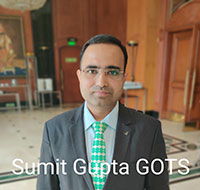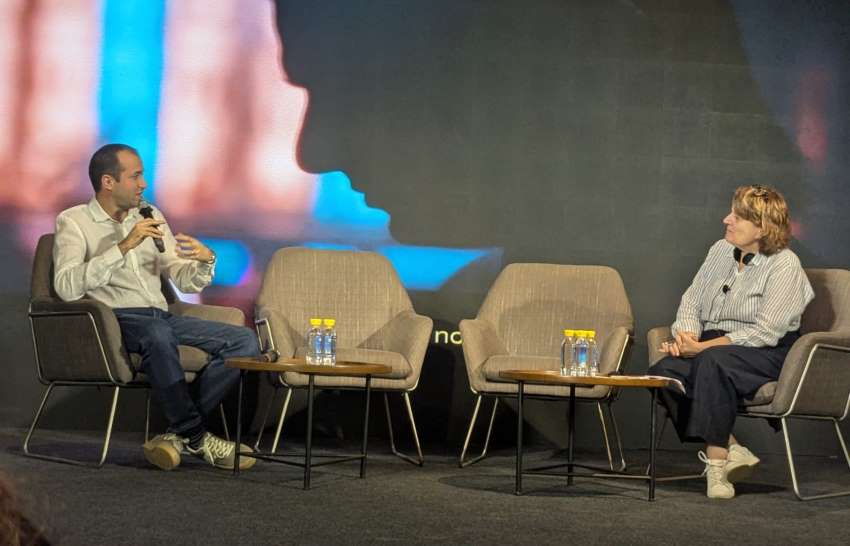FW
For the first half of the year Ralph Lauren’s net profit was up 37.3 percent. Sales were up 2.3 per cent. Meanwhile Ralph Lauren resumed sourcing from Bangladesh. The American fashion company stopped producing garments in the Asian country in 2015, after the Rana Plaza collapse.
Ralph Lauren has ambitions to increase sales by a billion dollars by 2023. Marketing spend will go up by a 100 million dollars over the next five years. The aim is for half of the company’s growth to come from core categories — men’s shirting — and half from undeveloped categories like denim, wear-to-work, outerwear, footwear and accessories. The last few years have been about cutting costs including closing 50 stores, eliminating more than 1,000 jobs and removing three lines of management. The goal is to woo the next generation of consumers and increase gross margins by improving the core product (which makes up 60 per cent of overall revenue), amplifying under-penetrated categories (including women’s, outerwear and denim) and operating with discipline, which constitutes being more careful about discounts and promotions, more strategic when it comes to price, and cutting costs in creative-but-impactful ways. The brand targets working professional men in their early-to-mid 30s, new-to-the workforce women in their mid-to-late 20s, and the creative class.
Filatex is a game-changer when it comes to innovative products and the adoption of new technologies. The company is in the business of manufacturing synthetic filament yarns with a wide range of products like POY, DTY, and FDY in polyester to polypropylene crimp yarns. The new plant in Gujarat is a CP unit of 600 TPD capacity where the chips-to-yarn technology was abandoned and the manufacturing technology of melt-to-yarn directly from petrochemicals was adopted. The plant has given Filatex a strong foothold in the polyester yarns market. Once the process technology was absorbed, the product basket was expanded to add FDY and DTY using the state-of-art technology from Germany. Filatex has made rapid strides in exporting drawn textured yarn. Its present focus is on the polyester sector. Filatex is now in the process of adding bright polyester at its plant with the latest spinning and winding technology. In terms of future expansion plans, Filatex has been nursing the idea of establishing its own captive power plant by the end of the next fiscal year.
The company has managed to maintain an edge over its competitors due to consistent product quality and low operating cost. It takes pride in its energy-efficient operations.
Bangladesh’s exports declined by 17.19 per cent in October this year compared to October last year. Export earnings declined 6.82 per cent in the first quarter of the fiscal.
The readymade garment sector is not in good shape and it has created a huge negative impact on the economy. Factories are being shut, making thousands of workers jobless. More than 100 factories shut down operations in the first seven months of this year. About 60,000 workers have lost their jobs as garment factories have closed due to higher cost of production and lower prices offered by foreign buyers. Export earnings have declined mainly because of the decrease in foreign orders for apparel products. Additionally, Bangladesh is facing competition from Myanmar, India, Pakistan and Vietnam in the global market. While these competitors have devalued their currencies against the dollar, Bangladesh didn’t, and is losing orders and its competitiveness. While European countries are dealing with the recession, the US market is comparatively in good shape. However, Bangladesh has been unable to take advantage of the US market.
Bangladesh is the world’s second largest readymade garment exporter after China, with the sector accounting for more than half of manufacturing employment and around 84 per cent of the export earnings of the country.
Luxury brands are likely to retreat from Hong Kong due to the ongoing pro-democracy protests that have weighed on third-quarter sales growth at firms like Cartier and Hugo Boss. Sales growth for companies making goods like jewelry, high-end fashion or handbags would come in at the low end of expectations.
Luxury brands, which have around 1,000 stores in the Asian shopping hub, are likely to start shutting some permanently. Hong Kong, which once accounted for around five per cent of global luxury sales, is now closer to two per cent. While the demonstrations might be a temporary disruption, a more structural shift is at play in the shopping habits of well-off customers from the Chinese mainland whose Hong Kong spending have long been buttressed sector sales. Despite China’s economic slowdown, shoppers are continuing to spend heavily on luxury - but they are increasingly staying at home because of a weaker currency that has blunted their overseas firepower. Meanwhile China has cut import duties and sales tax, eroding the competitive price advantage of foreign destinations like Hong Kong, London and New York. Chinese shoppers now make up 35 per cent of all industry sales - and they are on course to account for 90 per cent of growth in the market this year.
Interfilière Paris will take place January 18 to 20, 2020. This is an event for materials and textile accessories for the lingerie, swimwear, and sport markets. The event will host 160 manufacturers of knits, laces, embroideries, textile accessories, textile designs, and fibers, offering a look ahead at the lingerie-making of tomorrow. An incubator for future thinking, it offers an analysis of consumer desires and predicts profitable market shifts. “This promises to be a memorable moment in time, suspended somewhere between dreams and exceptional artisanal skill. A unique selection of laces, embroideries, silks, designs and textile accessories is aimed at meeting the needs of lingerie buyers as well as those of a new type of buyer from the bridal and haute couture markets. A magical setting will shine a spotlight on all the creativity reflected in this precious craftsmanship. Innovative techniques in embroidery, macramé, crochet, and work with precious metal threads can be seen as well as a variety of ultra-creative uses of textiles and recycled looks.
The Exception, a unique space, has since 2013 highlighted exceptional craftsmanship and gathered exhibitors, artists, and designers around a unified theme, driven to inspire and look ahead. This edition, The Exception will reveal an inspiring pause built around the worlds of weddings and haute couture.
Even after the withdrawal of concessions under the Generalised System of Preferences (GSP), India’s apparel exports to the US have risen five per cent compared to the same period last year when the duty benefits were available.
In July 2019 the US terminated India’s designation as a beneficiary developing nation under the GSP trade program after determining that it has not assured the US that it will provide equitable and reasonable access to its markets.
The textile industry in India is subject to provisions of the WTO Agreement on Subsidies and Countervailing Measures, which stipulate that if a developing country member’s exports of a product have reached a share of at least 3.25 per cent of world trade of that product for two consecutive calendar years, it will be considered as export competitive in that product. As per this provision, India is obliged to phase out subsidies which are export contingent. And India intends to phase out export subsidies on such products over a period of eight years.
India’s leather exports to the US grew by about seven per cent in the last four months. The US-China trade war offers huge opportunities to Indian leather exporters to raise shipments to the United States.
"The latest edition of Global Fashion Drivers, created by Mds and sponsored by Everis reveals that personalisation, price reduction, sustainability, reorganisation of store network and full commitment to Rfid are some of the drivers of fashion business. In its ‘Global Fashion Drivers’ report sponsored by Everis, Mds analyses 10 drivers that mark the evolution of the sector. The document is based on the analysis of the information published by a sample of the one hundred largest and most representative companies in the fashion sector in the world. Mds submits companies to a comprehensive questionnaire that sums the key areas of their operations."
 The latest edition of Global Fashion Drivers, created by Mds and sponsored by Everis reveals that personalisation, price reduction, sustainability, reorganisation of store network and full commitment to Rfid are some of the drivers of fashion business. In its ‘Global Fashion Drivers’ report sponsored by Everis, Mds analyses 10 drivers that mark the evolution of the sector. The document is based on the analysis of the information published by a sample of the one hundred largest and most representative companies in the fashion sector in the world. Mds submits companies to a comprehensive questionnaire that sums the key areas of their operations.
The latest edition of Global Fashion Drivers, created by Mds and sponsored by Everis reveals that personalisation, price reduction, sustainability, reorganisation of store network and full commitment to Rfid are some of the drivers of fashion business. In its ‘Global Fashion Drivers’ report sponsored by Everis, Mds analyses 10 drivers that mark the evolution of the sector. The document is based on the analysis of the information published by a sample of the one hundred largest and most representative companies in the fashion sector in the world. Mds submits companies to a comprehensive questionnaire that sums the key areas of their operations.
US-China trade war impacts foreign trade
The report says, about 22 per cent respondents cite the trade war between United States and China as one of the factors that put a brake on their foreign trade in 2019. On the other hand, 32 per cent companies believed currency volatility to be the main culprit. In 2018, 38 per cent of the world’s top 100 fashion companies opened new markets, compared to only 8 per cent of the companies that chose to retreat into one.
foreign trade in 2019. On the other hand, 32 per cent companies believed currency volatility to be the main culprit. In 2018, 38 per cent of the world’s top 100 fashion companies opened new markets, compared to only 8 per cent of the companies that chose to retreat into one.
Uncertainty, promotions, consumption slowdown and ecommerce boom also impacted the profitability of the world’s largest retailers with 22 per cent of the fashion giants dropping their profits in 2018. A significant number of companies like Mothercare, Kiko Milano or OVS were forced to refinance their debt during the past year.
Mergers and acquisitions rule
Several new mergers and acquisitions made headlines last year. Around 41 per cent companies bought a stake in new company while 4 per cent of fashion groups switched hands. Around 5 per cent of them sold some of their brands while 7 per cent collaborated with new partners. Supply chains were redesigned with flexibility alongwith volumes, price and speed determining their design. These strategies helped brands establish greater control over production, either by creating structure around productive hubs, establishing new logistic hubs, setting up their own factories or betting on automation.
Brands take a break from sustainability
The report states, the Greenpeace Detox campaign in 2011, collapse of the Rana Plaza in 2013 and the Climate Summit in Paris in 2015 placed sustainability on the radar of large fashion and luxury companies in the last decade. However, this acceleration took a break in 2018 with only 30 per cent of the companies being a part of international lobbies committed to sustainability.
The speed of ecommerce, the entry of new generations of consumers and the change in shopping habits forced the traditional retailers to revamp their distribution systems. Almost half of the retailers closed their stores while two-thirds opened new stores.
New innovations
Almost 43 per cent have implemented Rfid in their structures. Nine percent of these have acquired a startup to strengthen innovation, five per cent have added new payment methods and 10 per cent of the industry giants implemented virtual reality.
Modified logo, identity
Five retailers and luxury companies modified their logo or graphic identity in 2018. On the other hand, concentration led to changes in corporate identities with the creation of new holding structures and name changes in the parent company.
Digital transformation restores brand loyalty
Loyalty and personalisation ceased to ensure fluid and personal communication between brand and consumer to create long-term relationships based on trust. However, digital transformation is now restoring brand loyalty and customisation at the center of the game.
 GOTS recently introduced a consumer driven label that proves that its product is organic and sustainable. Sumit Gupta, Deputy Director-Standard Development and Quality Assurance, elaborates on this label and its benefits .
GOTS recently introduced a consumer driven label that proves that its product is organic and sustainable. Sumit Gupta, Deputy Director-Standard Development and Quality Assurance, elaborates on this label and its benefits .
“Textile is the second most polluting industry in the world,” which is highly contested and disputed tag associated with this space says Sumit Gupta, Deputy Director, Standard Development and Quality Assurance, Global Organic Textile Standard. “Most of this pollution happens during the processing of textiles due to the lack of effluent treatment systems,” he adds. His organisation GOTS is committed to controlling this pollution by recycling waste.
Currently, production is moving out of China to countries that do not have strong compliance or waste disposal norms or pollution treatment systems. Buyers should ask for a credible third party certification or GOTS certified products. “This will ensure responsible production. Currently, plant based dyes are trending. Also, there is an emerging trend of zero waste. Certified suppliers now want to sell products in India. Airports are selling GOTS labeled T-shirts. Zodiac recently received a GOTS certification for their production activities in India. The brand sells organic certified shirts under its brand Z3. To ensure sustainability, consumers have to drive brands toward sustainable decisions. They need to question their retailers, raise issues on social media. This will impel brands to provide the right products,” adds Gupta.
Bangladesh has made huge improvements in factory and worker safety. The country has also set up many effluent treatment plants. In 2018, Bangladesh reached second position (after India) in terms of GOTS certified facilities in the country. This growth trend showcases the commitment of the Bangladeshi textile industry to not only use organic fibres, but also to environmental and social compliances. Fire and Building Safety are included in GOTS criteria and the country has made significant progress in all these areas. “Though there has been an improvement in compliance in India too, the momentum is weaker. There has to be more improvement needed given the size of our industry. More initiatives are needed and judiciary has to also step in once the PILs are filed. Only then is action taken,” views Gupta.
According to Gupta, it is possible for brands to be more sustainable and affordable. “The investments you make will eventually pay off in the long run. In addition you need to position the product and adjust the supply chain. Buyers ask for compliances only up to the yarn or fabric level,” he says. Garmenting units are exempted from compliance and it is a mechanical process and the product need not be tested. Gupta believes this argument is not valid from the point of traceability. “Unless we have traceability and volume reconciliation at the garment level we can’t ensure that the garments use sustainable raw materials,” he says. GOTS has a consumer driven label which proves that its product is organic and sustainable. “This helps our consumer to make a buying decision at a retail store". In India this label is used on many products. It is used on t-shirts sold at the airports. Children wear brand Pranava also uses this GOTS label.
However, some brands sell certified products without the label. “We are trying to convince these brands to use this label on their products. It can be used a sewn-in or as a hangtag. So the consumer can see this is a genuine, verified third party claim. Several retailers are using this label. “We enable them to provide information to consumers,” adds Gupta.
To sustain this growth, it is important that the industry is strongly connected with other stakeholders in the organic textile value chain. While connections within the country are important; active engagement with international stakeholders including suppliers and buyers are vital to the success of the industry.
Denim Premiere Vision will be held in the UK, December 3 to 4, 2019. This show’s edition is broadening its offer as it will host 97 exhibitors, nine per cent more than the ones who participated in the December 2018 edition. The overall production of all these exhibitors counts for a billion meters a year, about one-third of the world’s entire denim production and about 90 per cent of the premium denim market.
Among novelties, the immersive, experimental and experiential space Habitat 21 will highlight a selection of about 30 new exclusive eco-responsible fabric developments created and produced as a collaboration between Denim Premiere Vision, Italian designer Kristian Guerra, installation designer Filippo Maria Bianchi and a few selected exhibitors identified by the PV Smart Creation team. Together they developed a selection of new eco-friendly fabrics debuting at the show. A special session will focus on the importance of denim in youth subcultures. Other workshops, trend seminars focused on spring/summer 2021 and fall /winter 2021-22 will take place during the show along with The Denim PV Smart Talks presenting eco-responsibility game changers.
There are some clouds on the horizon as the denim market is facing some difficulties. There are political and economic problems generally.
Ghana is providing training for skilled jobs in the textile industry. Participants will take part in various courses including digital pattern making and grading, industrial engineering, quality assurance, and monitoring skills. They will learn on modern training equipment. The courses will not only provide training and qualifications for staff at the companies, they will also improve job prospects for young Ghanaians. Higher productivity and better training for skilled workers give the companies more scope to increase their employees’ wages. The incomes of staff at local firms are thus set to rise by around 20 per cent. The aim is to create 1200 new jobs within three years.
Low wages make African countries attractive business locations compared with their Asian competitors. Although Ghana has experience in textile and clothing production for the regional market, it lacks export expertise. The textile industry in Ghana has been struggling to meet the demands of the market due to the smuggling in of unregistered and cheap textiles from other countries. The high operational cost has also led to the shutdown of some of the textile companies, which has robbed many Ghanaians of their jobs. The textile sector which had a workforce of nearly 30,000 barely has 3,000 now.












